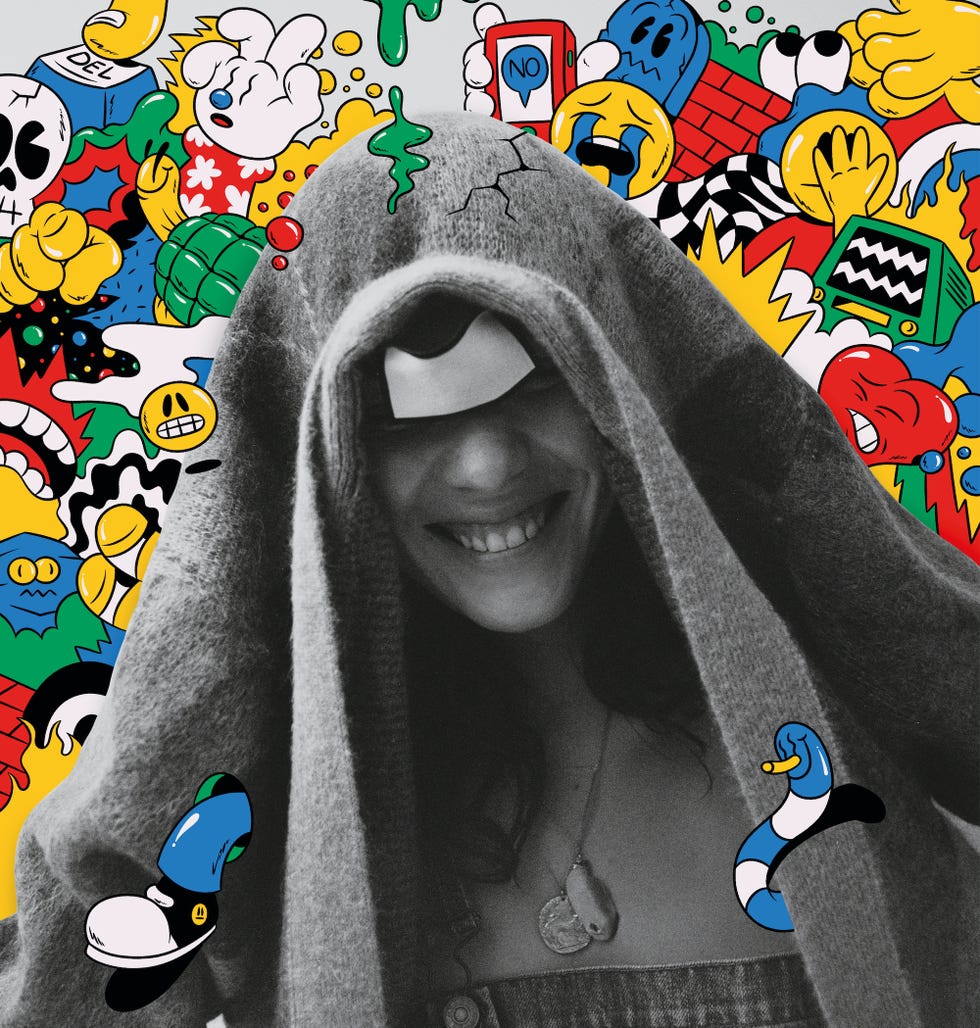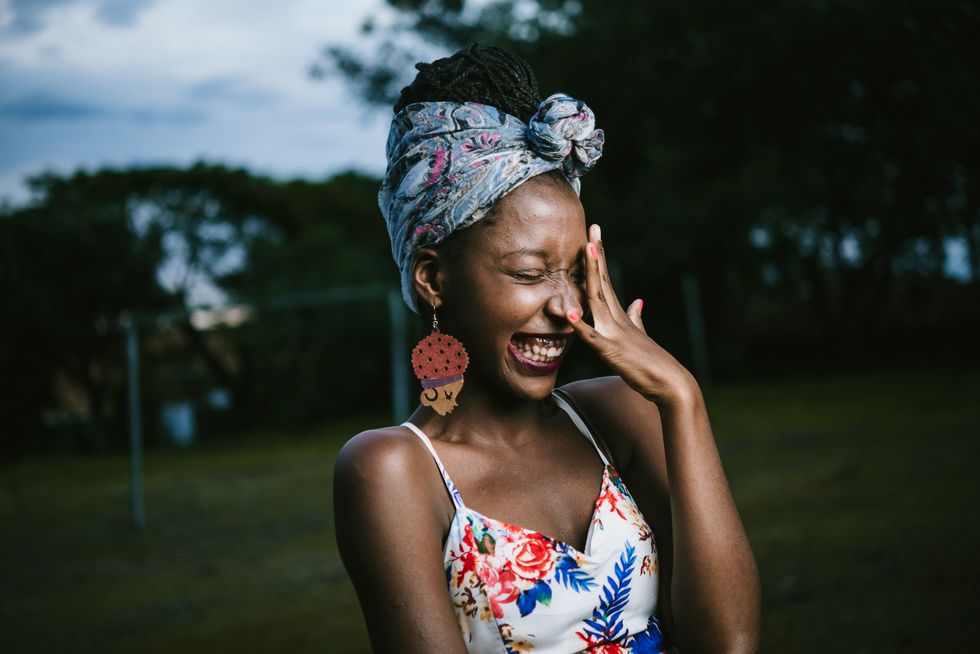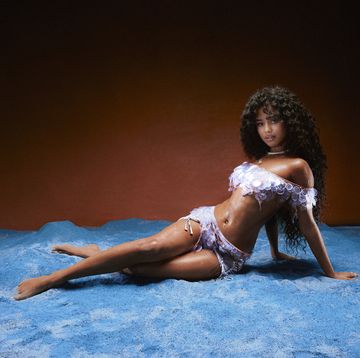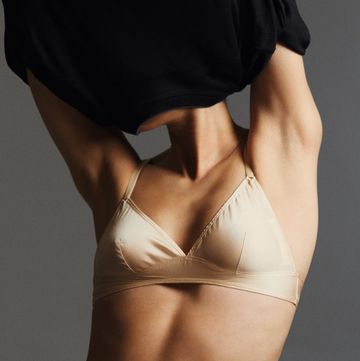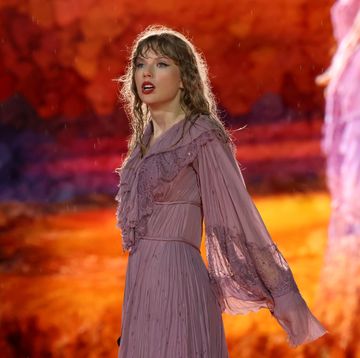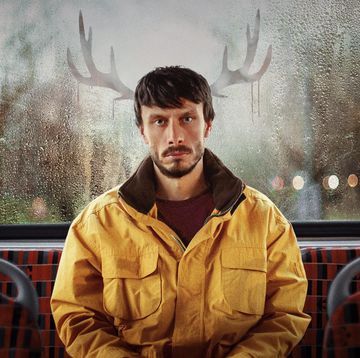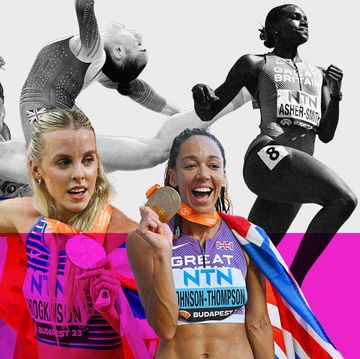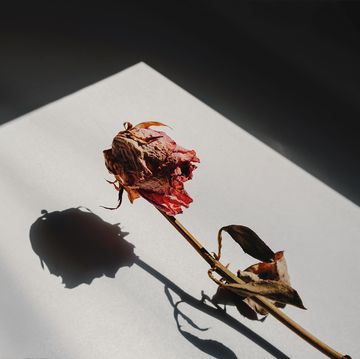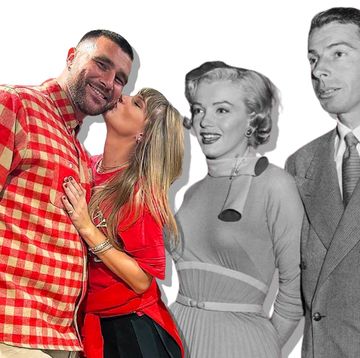Everyone reacts differently to the experience of sharing on social media. For some, it comes with a feeling of sweet gratification. For others, a rush of stage fright. For my colleague Eni Subair, fashion news editor of ELLE, it makes her cringe so badly she just wants to run and hide.
‘I have to immediately distract myself so as not to check my phone afterward. And if I do want to browse, I’ll switch to my finsta account because I don’t want to see who’s seen my post, who’s liking it, who’s engaging with it,’ she says, grimacing even at the thought of it. ‘It just feels so embarrassing. And then I cringe myself out for over self-analysing, because – let’s face it – no one else cares.’
But other people do care, or at least they care about their own social-media-induced self-awareness. Earlier this year, a tweet that read ‘Why is posting on Instagram so embarrassing?’ attracted nearly 100,000 likes, 11,500 retweets and a deluge of commiserating comments, including: ‘Idk I cringe when I post that’s why I archived all of them and have 0 posts atm [crying face emoji] [sic]’ and ‘Like it honestly feels like everyone is just staring at you [crying face emoji]’ – something that Eni strongly relates to. ‘The climate has changed and it all feels so cringe. Even trying to come up with a caption feels embarrassing.’
Those are personal instances of self-inflicted mortification on social media, but even huge public moments have recently been underpinned by a deep sense of cringe. The political mess we're in right now has been, among other things, toe-curling: Rishi Sunak being announced as the UK's third prime minister in just three months; Boris Johnson cutting his Caribbean holiday short to enter the leadership race, only to pull out (cue numerous cringeworthy Twitter jokes). As one member of the public put it in a recent BBC interview: 'As a country I just think it's so embarrassing that we're in this state to be honest'. Going by the memes and Tweets, social media would agree.
Even former prime minister Liz Truss' U-turn on her mini-budget made us feel mortified, for her, for the economy, but also for ourselves after having wound up in this absurd political predicament in the first place. From the public to the personal, it seems we can’t escape embarrassment right now. But since when did everything feel so… awkward?
The physical experience of ‘cringing’ is different for everyone, but it’s nothing if not visceral. Maybe it makes your skin squirm or brings on strong feelings of repulsion. According to Ty Tashiro, the social scientist and author of Awkward: The Science of Why We’re Socially Awkward & Why That’s Awesome, ‘Awkward moments are deviations from social expectations, [so] if we miss even a tiny expectation or we think we’ve crossed some boundary, it creates that surge of emotion. Our faces might flush, our heart rate might pound, you might start to sweat a little bit. And then there’s that panicky feeling that you need to do something to fix the situation – or even worse, run away entirely and hide in embarrassment.’ (We see you, Eni.)
Often we cringe and we don’t really know why. You might sense that something’s wrong, but you can’t put your finger on exactly what it is. Enter: the ick. Over the past year, the 'ick' has become part of the dating vernacular, giving a name to cringing in our relationships. The 'ick' might come on suddenly when you feel grossed out by the person you thought you fancied but now can’t stand to be near; it could be as innocuous (or not) as their bad taste in shoes or, as one tweeter recently confessed, the fact that there was a printer in the background of their love interest’s Snapchat. Love Island-ers have been avid adopters of the term, which, given they’re physically trapped in the villa, is somewhat understandable and handy, but it was first coined by Calista Flockhart’s Ally McBeal back in the Nineties.
Recently #ick videos have been viewed 1.3 billion times on TikTok; there’s even an IckTok subculture where people share their cringe-worthy anecdotes. For Tashiro, it’s a handy term: ‘"Ick" is two clicks worse than cringing,’ he says, emphasising that the feeling can quickly evolve into disdain, when you don’t want to see the "ick" offender ever again. ‘It feels more final to me.’
The resurgence of the 'ick' and its proliferation on social media is reflective of just how internet-dependent the cringe era is. Our memes depend on awkward moments; the kind of humour that travels well and travels fast, especially, you could argue, right now when headlines are so bleak and we all need a bit of light relief. Senior creative strategist at Mørning and internet commentator Emily Chappell maintains that cringe content ‘opens up a dialogue around personal social cues. "Cringe" is a relatable conversation piece – "Oh my god, how could another human act like that?" Anything on the internet that is relatable, especially if it causes a reaction or opinion, equates to users commenting and DMing.’ But the more cringing content spreads, the more we worry that we, too, might end up the subject of a WhatsApp group somewhere or a viral meme that makes the rest of the internet snigger.
There is also a heightened self-awareness driving the cringe era, which is fuelled by our presence on multiple platforms, and the fact that our lives are so public and potentially out of our control. For Rusty Foster, the media critic and author of newsletter Today in Tabs, ‘"Cringe" is a compact word for a feeling that’s been around forever, but has been increasingly unavoidable since we all started being able to see everyone else’s life online.’
Indeed, we spend so much more time cultivating our online personas that nothing seems to come naturally anymore, which leaves plenty of room for those awkward moments to arise. Melissa Dahl, the executive health director at Bustle Digital Group and the author of Cringeworthy: How to Make the Most of Uncomfortable Situations, is someone who wholeheartedly believes we’re in an era of embarrassment right now.
Although she wrote her book four years ago, she’s seen interest in her work spike recently. According to Dahl, who defines ‘awkwardness as more of a situational thing and cringing as more the internal feeling’, we’re even more likely to feel the latter right now because of the way we engage with social media. ‘It’s when you can sense that the version of yourself you’re trying to present to the world isn’t really you,’ she says. ‘When there’s this gap between who you want to be and how the world actually perceives you. That is where the cringe comes in.’
For Dahl, this increased self-awareness was already well underway pre-pandemic, but was accelerated by Covid lockdowns. ‘On Twitter, people were talking about a fear of being perceived as they emerged from lockdown. To me, that is completely it: after a year of not being seen off screens, we became so much more aware of ourselves and of our corporeal forms.’ Our disproportionate time on Zoom didn’t help. ‘When I’m on camera, I’m literally watching myself the entire meeting. Then [when] socialising [in real life] and not being able to watch myself, I’m questioning, “How are they seeing me? Is my face doing the thing I want it to be doing?”’
Tashiro agrees: ‘The pandemic’s social distancing obviously disrupted how we interact with one another. And it seems like it was a really long time ago – but it wasn’t.’ Even though he studies social awkwardness for a living, he’s still not immune to experiencing it: ‘I still find myself a little uncertain in social situations because some of it I haven’t done since pre-pandemic.’
However you might experience awkward situations, cringing isn’t necessarily a bad thing. Both Dahl and Tashiro agree that it is actually a socially robust response and, rather than alienate you, can bring you closer to people. ‘As much as we hate feeling awkward, it’s actually really helpful,’ says Tashiro. ‘It’s kind of like an overly sensitive smoke alarm, and when there’s a deviation it’s going to go off, and it’s going to go off probably louder and more uncomfortably than we want. But it does direct our attention to diagnosing what’s wrong, and then trying to fix the situation.’
It’s also rooted in empathy. ‘[Cringing] can’t exist without the ability to imagine what somebody else is thinking,’ explains Dahl. ‘If you are someone who tends to cringe a lot, that means you also have the capacity to be super empathetic, and that can be a really good thing.’ And let’s not forget that the era of cringe is in fact underpinned by humour. It’s imperative to find the funny side of it all. ‘The only way to really free yourself out of it is just to start thinking of it as truly hilarious,’ says Dahl.
The humour implicit in today’s cringe movement can be traced back to the early Noughties when the awkward turtle hand gesture was a thing (if you’re not familiar with it, Google it: it definitely was a thing) and famously awkward comedies, such as The Office, Da Ali G Show and Curb Your Enthusiasm, were taking off. These shows had the power to make you shudder and laugh at the same time. More recently, embarrassment has been celebrated on screen with Issa Rae’s Insecure, which was predated by the actor’s first hit YouTube series The Mis-Adventures of Awkward Black Girl, which proudly announced its cringe factor in the title.
Cringing can also be communal. It allows us to share in our insecurities without necessarily admitting what they are. While shuddering at someone else’s social faux pas, you might feel happy that you’re not the one dying inside right now, while also silently acknowledging that it’s precisely something you would be capable of doing. So, while life might be particularly embarrassing for individuals, for celebrities and for entire countries right now, there is reason to embrace the era of cringe. Without sounding too cringey: to feel something, anything, is to be alive. ‘They’re moments that shake you awake a little bit,’ says Dahl. ‘That disrupt your regularly scheduled programming and the monotony of life. They can truly be pretty wonderful.’

